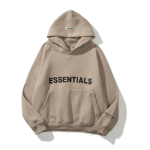Pakistani formal dresses are renowned worldwide for their exquisite craftsmanship, intricate designs, and timeless appeal. Rooted in rich cultural heritage, these outfits are not just clothing but a reflection of the country’s history, art, and traditions. From traditional wear to contemporary designs, Pakistani formal dresses cater to a wide range of tastes and preferences, making them ideal for weddings, parties, and formal gatherings.
Traditional Styles with a Modern Touch
The beauty of Pakistani formal wear lies in its versatility. Whether you’re drawn to traditional styles or modern cuts, there is something for everyone. Some of the most popular traditional dress styles include:
- Shararas and Ghararas: These traditional formal dresses have been worn by Pakistani women for centuries. Shararas feature flared pants, while ghararas have a more structured silhouette. Both are often paired with short or long kurtis and a dupatta (scarf). Heavily embellished with intricate embroidery, zari work, or beadwork, they are perfect for weddings and festive events.
- Lehengas: A classic favorite for bridal wear or festive celebrations, lehengas consist of voluminous skirts paired with intricately embroidered blouses. Designers often incorporate vibrant colors, delicate embellishments, and hand-woven fabrics to create luxurious pieces that stand out at any occasion.
- Anarkali Dresses: Inspired by the Mughal era, Anarkali dresses are long, flowing gowns with a fitted bodice and a flared skirt. This style has remained timeless due to its regal appearance and flattering silhouette. Adorned with heavy embroidery, sequins, and zari work, Anarkali dresses are popular choices for formal events.
- Sarees: While traditionally associated with India, sarees have found a significant place in Pakistani fashion, especially at formal events. Pakistani sarees typically feature luxurious fabrics like silk or chiffon and are embellished with elegant embroidery or beadwork, making them suitable for various occasions.
- Angrakha and Peshwas: These traditional styles are experiencing a renaissance in modern fashion. Angrakha features a unique overlapping front panel, while Peshwas is a long frock-style dress, often crafted from luxurious fabrics like silk, chiffon, and velvet. Both styles can be embellished with rich embroidery, making them ideal for formal settings.
Cultural Significance
Pakistani formal dresses are deeply intertwined with the country’s cultural identity. Each outfit often represents regional traditions, showcasing the craftsmanship of local artisans. For instance, Sindhi ajrak and Kashmiri embroidery reflect the distinct artistry of their respective regions. During significant cultural celebrations and events, wearing these traditional outfits fosters a sense of pride in heritage and reinforces cultural bonds.
Fabrics and Embellishments
The selection of fabric plays a vital role in the elegance of Pakistani formal dresses. Common fabrics include:
- Silk: Known for its luxurious feel and sheen, silk is often used for bridal wear and formal occasions.
- Chiffon: Lightweight and airy, chiffon is popular for flowy designs and layering.
- Velvet: Ideal for winter weddings, velvet offers warmth and a plush look.
- Organza: This crisp fabric adds structure to dresses, making it perfect for layered designs.
The embellishment techniques that elevate these outfits include:
- Zari and Zardozi: Traditional embroidery methods using gold or silver thread provide a luxurious finish.
- Sequins and Beads: These elements add sparkle, making them perfect for evening wear.
- Mirror Work and Gota: Especially popular in bridal wear, these intricate details enhance the dress’s beauty and sophistication.
Contemporary Pakistani Designers
Modern Pakistani designers are taking traditional attire to new heights by blending heritage with contemporary aesthetics. Designers like Sana Safinaz, Elan, HSY, Nureh, and Vanya are known for their innovative designs, impeccable craftsmanship, and luxurious fabrics. Their collections often include a mix of traditional styles with modern cuts, appealing to women who appreciate both heritage and innovation.
- Sana Safinaz: Renowned for their intricate embroidery and elegant silhouettes, their collections range from casual to formal wear.
- Elan: Known for their bold use of colors and innovative designs, Elan offers unique pieces that blend tradition with modernity.
- HSY: A pioneer in the fashion industry, HSY specializes in bridal couture and high-end formal wear, known for their detailed craftsmanship and opulent designs.
Styling Tips for Pakistani Formal Dresses
To make the most of Pakistani formal dresses, consider these styling tips:
- Accessorize Wisely: Complement your outfit with traditional jewelry such as jhumkas, maang tikka, or statement necklaces. Choose pieces that enhance your attire without overwhelming it.
- Footwear Matters: Opt for traditional footwear like khussas or juttis, which add an ethnic touch. For Western-style formal dresses, elegant heels work well.
- Dupatta Styling: The dupatta is a key element of many Pakistani outfits. Experiment with different draping styles to elevate your look, whether you prefer it over one shoulder or gracefully cascading down.
- Makeup and Hair: Keep your makeup in line with your outfit. For heavily embellished dresses, consider a softer makeup look to balance the overall appearance. Hair can be styled in traditional updos or loose waves, depending on the occasion.
- Color Coordination: Choose colors that complement your skin tone and suit the event. For weddings, vibrant hues are favored, while more muted tones work well for formal dinners and gatherings.
The Influence of Weddings and Festivals
In Pakistan, weddings and festivals such as Eid play a significant role in shaping fashion trends. Formal dresses, particularly bridal wear, are often the most elaborate and luxurious, incorporating rich colors, heavy embroidery, and intricate beadwork. Each season brings forth new trends, with brides opting for everything from bold and bright hues to pastel shades, depending on the occasion and their personal style.
Emerging Trends in Pakistani Formal Fashion
Recent trends in Pakistani formal wear reflect a fusion of traditional and contemporary styles. Some notable trends include:
- Sustainable Fashion: Many designers are now focusing on sustainability, using eco-friendly fabrics and ethical production practices.
- Minimalistic Designs: While heavy embellishments remain popular, there’s a growing trend toward minimalistic and clean designs that focus on silhouette and quality.
- Digital Prints: The use of digital prints allows for vibrant colors and intricate patterns without the weight of heavy embroidery, appealing to a younger audience.
- Unisex Styles: Designers are also experimenting with unisex styles, creating outfits that can be worn by anyone, reflecting a shift toward inclusivity in fashion.
Conclusion
Pakistani formal dresses beautifully capture the essence of elegance, tradition, and modernity. Whether for a wedding, a formal dinner, or a festive event, these outfits are designed to make the wearer feel special and glamorous. From rich fabrics to intricate details, each dress tells a story of heritage and art, making Pakistani formal wear a timeless and cherished part of global fashion. With a blend of tradition and innovation, Pakistani formal dresses continue to evolve, inspiring generations to embrace their cultural roots while making a statement in today’s fashion world.
















